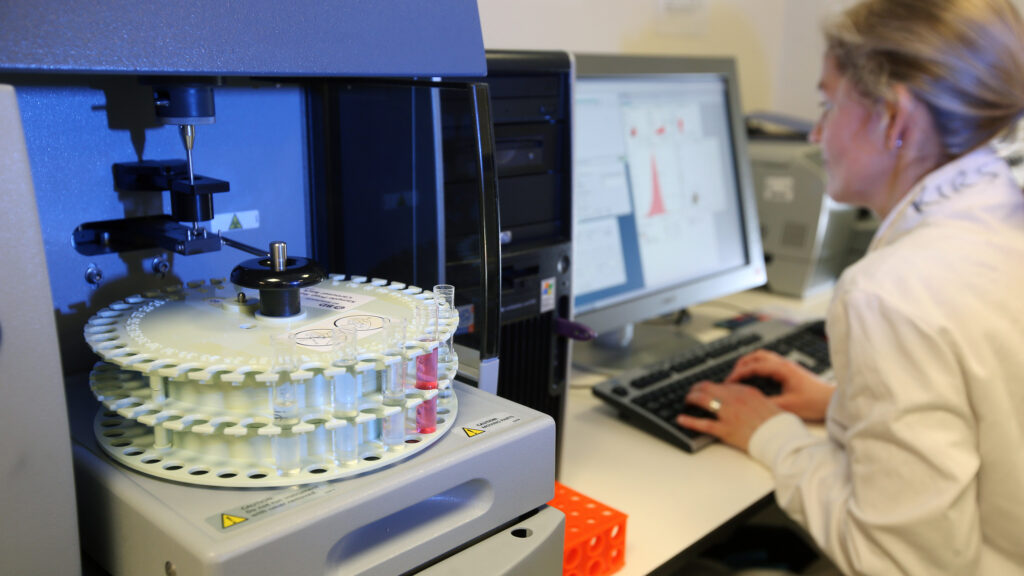


The global Cell Expansion market has been the subject of a comprehensive research report published by Amoré [33d913c9]. The report provides an in-depth analysis of the market, including its size, revenue, leading competitors, application, cost, financial standing, product portfolio, expansion strategies, and regional presence. It offers growth estimates and forecasts for the market from 2022 to 2031. The report focuses on qualitative components that form the foundation of growth estimates. It also highlights globally recognized Cell Expansions and recent advancements in the field. The report includes a COVID-19 analysis, which shows that the market has recovered from the negative impact of the pandemic and is driven by growth in the food and beverage industry and global demand for water treatment facilities. North America is expected to continue dominating the market. The report also provides projections for the size and composition of Cell Expansion markets in fifteen major countries [33d913c9].
The global Cell Expansion market is projected to experience further growth in the coming years. The report highlights the leading competitors in the market, including GE Healthcare Life Sciences, Thermo Fisher Scientific, and Terumobct. These companies are analyzed based on their application, cost, financial standing, product portfolio, expansion strategies, and regional presence. The report provides valuable insights for investors and stakeholders in the market [33d913c9].
The global flow cytometry market is projected to reach a valuation of USD 13,295.4 million by 2034, with a compound annual growth rate (CAGR) of 7.6% [a10a9ed3]. This growth is driven by the integration of artificial intelligence (AI) and machine learning (ML) into flow cytometry data analysis, which enhances data interpretation and transforms the market. AI and ML technologies enable researchers and clinicians to gain unprecedented insights into cellular dynamics, leading to more precise diagnoses, personalized treatment strategies, and accelerated drug discovery processes. The market is witnessing a surge in demand for sophisticated instrumentation and software platforms capable of harnessing the power of AI and ML. The reagents, consumables, and accessories product type segment occupies 54.7% of the market shares in 2024, and the biopharmaceutical companies segment captures 50.2% of the market share in the same year. The market size in the United States is projected to rise at an 8.9% CAGR through 2034, while Germany is anticipated to develop at a 7.3% CAGR, India at an 8.2% CAGR, and China at a 9.1% CAGR. The key players in the flow cytometry market include BD Biosciences, Beckman Coulter, Thermo Fisher Scientific, Sony Biotechnology Inc., Sysmex Partec GmbH, Miltenyi Biotec, Luminex Corporation, Bio-Rad Laboratories, Inc., and Cytek Biosciences, Inc. [a10a9ed3] [33d913c9].
The Tablet Tissue Paper market size is estimated to reach USD 42.8 Billion at a CAGR of 6.5% by 2030. The report includes historic market data from 2019 to 2023. The Current market value is pegged at USD 26.7 Billion. Some of the major companies covered in this research are Kimberly-Clark Corporation, Procter & Gamble Co., Georgia-Pacific LLC, Svenska Cellulosa Aktiebolaget (SCA), Hengan International Group Company Limited, Cascades Inc., Metsä Tissue, Sofidel Group, WEPA Group, Asia Pulp & Paper (APP), Vinda International Holdings Limited, Kruger Inc., Empresas CMPC S.A., KP Tissue Inc., Clearwater Paper Corporation. Tablet tissue paper, also known as compressed or coin tissue paper, refers to a highly compact and portable form of tissue paper. Increasing demand for biodegradable and eco-friendly tablet tissue papers. Development of creative and convenient packaging solutions. Growing popularity for use in various applications such as makeup removal, baby care, and cleaning. Rising demand for higher-quality, soft, and durable tablet tissues. Increasing sales through e-commerce platforms and direct-to-consumer channels. The compact size and ease of use make tablet tissues popular among travelers and outdoor enthusiasts. Increasing urbanization and hectic lifestyles drive demand for convenient hygiene solutions. Growing consumer preference for eco-friendly and biodegradable products. Higher disposable income in emerging economies supports increased spending on personal care products. Growth in the travel and tourism industry boosts demand for portable hygiene products. Increased awareness of personal hygiene and sanitation creates opportunities for market growth. Use as corporate gifts and promotional items due to customization capabilities. Manufacturing and packaging of compressed tissues can be more expensive than regular tissue products. Strong competition from traditional tissue paper products. Limited consumer awareness and understanding of the product in some regions. Dependence on raw materials and potential supply chain disruptions. Higher prices compared to conventional tissue papers can limit market penetration. Strict environmental regulations affecting the production and disposal of tissue products. Limited availability in certain markets and retail channels. Traditional preferences for regular tissue paper products in some cultures. [05400d27]